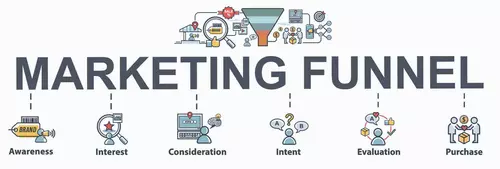Customer Journey Mapping for Market Researchers
Mastering Customer Experience and The Steps Involved in Customer Journey Mapping
You might also like…
Why Qualitative Research is Essential in Market Research (and How EthOS Elevates It)
Discover why qualitative research is such an important part of market research and how OvationMR's tool EthOS can help. By: Anne Collins Date: March 25, 2025 Inside this Article... Introduction Why Small Sample Sizes Still Deliver...
Why AI Tools Built by Researchers Make a Difference
Learn more about AI-powered market research tools and why tools build by researchers for researchers are leading the charge. By: Erik Larson Date: March 4, 2025 Inside this Article... Introduction Why Outsiders Miss the Mark Why...
Customer Survey Best Practices: Unlocking Insights Through Your Customer List
Learn how to leverage customer lists for market research. Explore best practices, address low response rates, and drive actionable insights. Date: February 11, 2025 Inside this Article... Introduction Conducting Surveys with Customer...

OvationMR
Service Provider
Market research industry leaders with over 100 collective years of client and agency-side experience.
B2B research experts with advanced skills in Quantitative Data Analysis, Discrete Choice Models, Market Analysis, and Sampling Methods.
Today, every aspect of digital marketing and the all-embracing marketing umbrella is led by those on the other end of these interactions – the customers.
Instead of asking how you can get the customer to do what the marketers intend, the question focuses on eliciting solutions for helping the customer achieve their goals while fulfilling yours.
We will be assessing how customer journey mapping can be utilized to facilitate interactions that benefit the customers while resulting in improved customer experience statistics for your organization.
This brief guide will help you improve your customer experience by creating customer journeys that make it easy for the latter to engage with your business.
As always, it’s important to measure your progress with market surveys and other in-depth methods like online focus groups. These market research actions will help you test to see if your product and service engagements are adding up to happy clients who will come back for more and promote your brand.
What is Customer Journey Mapping?
In simple words, customer journey maps detail every touchpoint or incident of engagement your customer has with your business. It considers both online and offline interactions, e.g., online shopping.
It allows you to visualize the different routes a customer takes to interact with your brand, whether making an online purchase through your Etsy store or customer service. Besides that process, you can get a sense of their pain points, needs, and motivations for achieving a goal.
If it’s your website’s customer journey you’re concerned about, journey mapping can reveal the points at which your site can help them succeed and where it fails them. For example, let’s consider you have an alarmingly high cart abandonment rate.
By retracing the journey a customer takes to make a purchase, you can determine whether it’s the payment gateway that pushes people away or if the process is too complicated at the very first touchpoint.
You will be essentially donning your customers’ shoes to see how you can simplify customer engagement and make it more effective and efficient.

,
Elements of a customer journey map
The anatomy of a customer journey map doesn’t only consist of touch-points. If you simply list them in an excel sheet, you’d be creating a process flow.
Customer journey maps add a little more context to each interaction. You dig deeper than simply “Customer sees sunglasses ad on social media for New Wayfarers® ➢ customer visits the Ray-Ban® website ➢ customer adds Polarized New Wayfarers® product to the shopping cart ➢ customer makes the purchase.”
A more realistic customer journey ending in a purchase may look like:
- The customer sees an ad or multiple ads on Facebook
- The customer clicks on the link
- The customer checks out the product
- The customer goes back to their Facebook page to see reviews
- The customer researches your brand
- The customer comes back to your website
- The customer puts the item in the cart
- The customer confirms the order and makes the payment
- The customer receives the product
- The customer completes a brand tracking survey about the experience
This example is overly simplified as there are various other routes the customer can take after each touchpoint. For instance, the customer may abandon their cart at step 7, prompting the digital marketer to send them a reminder email.
The crux here is that process flows don’t justice to customer journeys. When you’re visualizing each interaction from the customer’s perspective while journey mapping, you can analyze the typical customer’s:
- Behavior, which describes what they’re trying to achieve;
- Attitude, which describes what they’re feeling or thinking about at each step and why they’re there;
- Online experience, which describes what and/or who they’re interacting with;
- Offline experience, which describes elements that could be included to make the interaction more effective and efficient.
Without these ingredients, your customer journey map will be missing approximately 50% of insightful information.

Steps for Customer Journey Mapping
Before we dive into the steps, it takes to build a customer journey map, and it’s critical to note that customer journeys are not exactly linear from point A to point B. It can be cyclic or multi-channel (such as diverting traffic from your Instagram Store to your website).
With that said, let’s mosey on to the step-by-step process of customer journey mapping:
1. Define research objectives
The first question to ask while customer journey mapping is, “Why are you undertaking this process in the first place?”
Are you conducting an exploratory study to understand negative customer experience metrics? Are you setting up a new website? Are you in the process of restructuring the customer journey in its entirety or just introducing further steps?
Much like any other investigative study, start the mapping process with clearly defined goals.
2. Create Buyer Personas
If you’re spending time and money improving customer experience by journey mapping, you must understand who your customers are, or your efforts might be in vain.
To create buyer personas that represent your customers as accurately as possible, you’ll have to figure out which customers you’re targeting. Are you journey mapping to understand why users lapsed? Or are you trying to develop an entirely new journey for big spenders?
Either way, the buyer persona should include the age range, employment status, income group, family status, geographic location, etc., at a minimum.
Buyer personals are usually developed during the initial market research phase, which means that you might have this information at hand. If not, start by creating at least three personas that best represent your general target market.
Conducting a customer/market segmentation at this phase can help you bring clarity and depth, and definition to your customer personas and help you quantify their value in the marketplace in terms of capturing share.
3. List the Touchpoints Your Customers Interact with
This goes without saying.
The very purpose of customer journey mapping is to define the points your customer interacts with your business. As we mentioned before, don’t just list points of engagement. Add a little more context.
Describe:
- The people that interact with each touchpoint. Are they your end-users? Sales reps? Company management?
- The interactions are taking place, i.e., online and offline channels diverting traffic to your website. This may include your website, Google search rankings, social media, email marketing, guest blogs, etc.
- The actions that take place at each touchpoint;
- General customer attitudes;
- The touchpoints that matter the most during the journey, e.g., product description pages.
Once you’ve plotted the touchpoints, assess whether customers can complete transactions successfully. For example, are your customers able to find products in the proper categories? Or is your website too complicated and confusing to navigate?
Google Analytics can be quite effective in making these insights accessible, making it easier for you to understand why your customers’ needs aren’t met.
4. Recommend changes
Once you’ve visualized your customer journey and marked the touchpoints that need to be addressed, suggest changes for improvement. Start by prioritizing which area needs your attention at present.
For example, if your product pages lack meaningful information, the customer can decide and take corrective measures before focusing on improving image qualities.
After you’ve suggested ideas for each pain point, test them out.
Whether it’s through usability testing, A/B tests, or concept tests, filter out which action gives you the best results and improves customer experience. Take the customer journey yourself with one of your customer personas in mind.
5. Set KPIs and Metrics
This step is ubiquitous for most marketing decisions for an excellent reason.
KPIs such as conversion rates, click-through rates, Net Promoter Scores®, and measure the effectiveness of the changes you’ve made to the customer journey. This will allow you to remain proactive and make further improvements simultaneously.
Your brand’s customer journey is an essential part of your overall customer experience. A McKinsey report published in 2014 shows that businesses can improve their CX by 20% by maximizing customer satisfaction through effective journey mapping.
This should be incentive enough for your business to evaluate its existing customer journey and using market research to sustain customer satisfaction.
Follow
OvationMR

Bart Borkosky
Author
Bart Borkosky is Chief Research Officer of OvationMR and posts frequently on The Standard Ovation and other Industry Blogs.
OvationMR is a global provider of first-party data for those seeking solutions that require information for informed business decisions.
OvationMR is a leader in delivering insights and reliable results across a variety of industry sectors around the globe consistently for market research professionals and management consultants.

Need help with your project?
We are ready to offer you:



